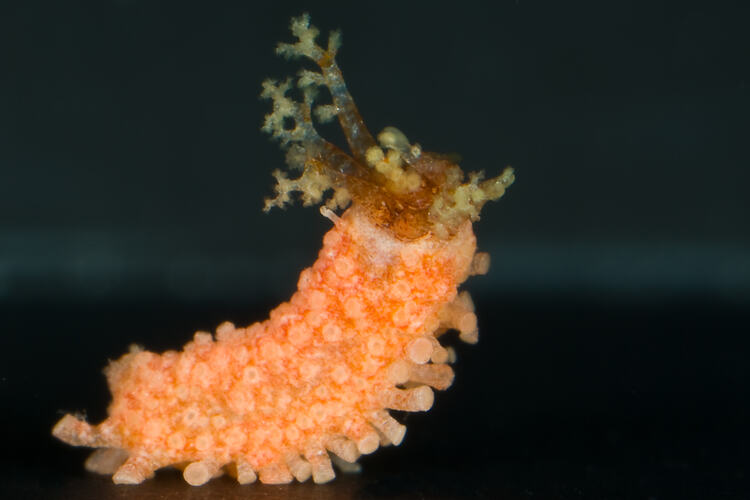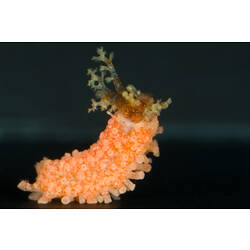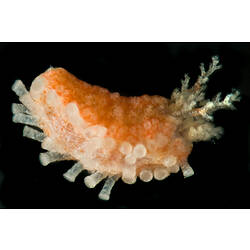General Description
Body calcareous and hard from scales in the body wall, golden-red. Up to 1 cm long.
Biology
This tiny species is fissiparous. This means individuals can reproduce by splitting their bodies in two. In this species the front end splits from back end to produce two genetically identical individuals. These new individuals then grow back the other half. This is very uncommon in sea cucumbers, and usually only occurs in small species, such as this one. However, at least one other species in south-eastern Australia is also known to reproduce this way. While Squamocnus aureoruber appears to be able to split this way at any time of year throughout its range, it can also reproduce sexually by mating and producing eggs. They are thought to be hermaphrodites.
Distribution
South-eastern Australia.
Habitat
Fine fronds of small seaweeds, to depth of at least 85 m.
More Information
-
Animal Type
-
Animal SubType
-
Brief Id
Hard body, yellow-red.
-
Colours
Yellow, Red
-
Maximum Size
1 cm
-
Habitats
-
Diet
Organic matter
-
Endemicity
-
Commercial
No
-
Conservation Statuses
CITES: Not listed, FFG Threatened List: Not listed, DSE Advisory List: Not listed, IUCN Red List: Not listed
-
Depths
Shore (0-1 m), Shallow (1-30 m), Deep ( > 30 m)
-
Water Column Locations
On or near seafloor
-
Taxon Name
-
Scientific Author
O'Loughlin & O'Hara, 1992
-
Common Name
Sea Cucumber
-
Phylum
-
Class
-
Order
-
Family
-
Genus
-
Species Name
aureoruber



